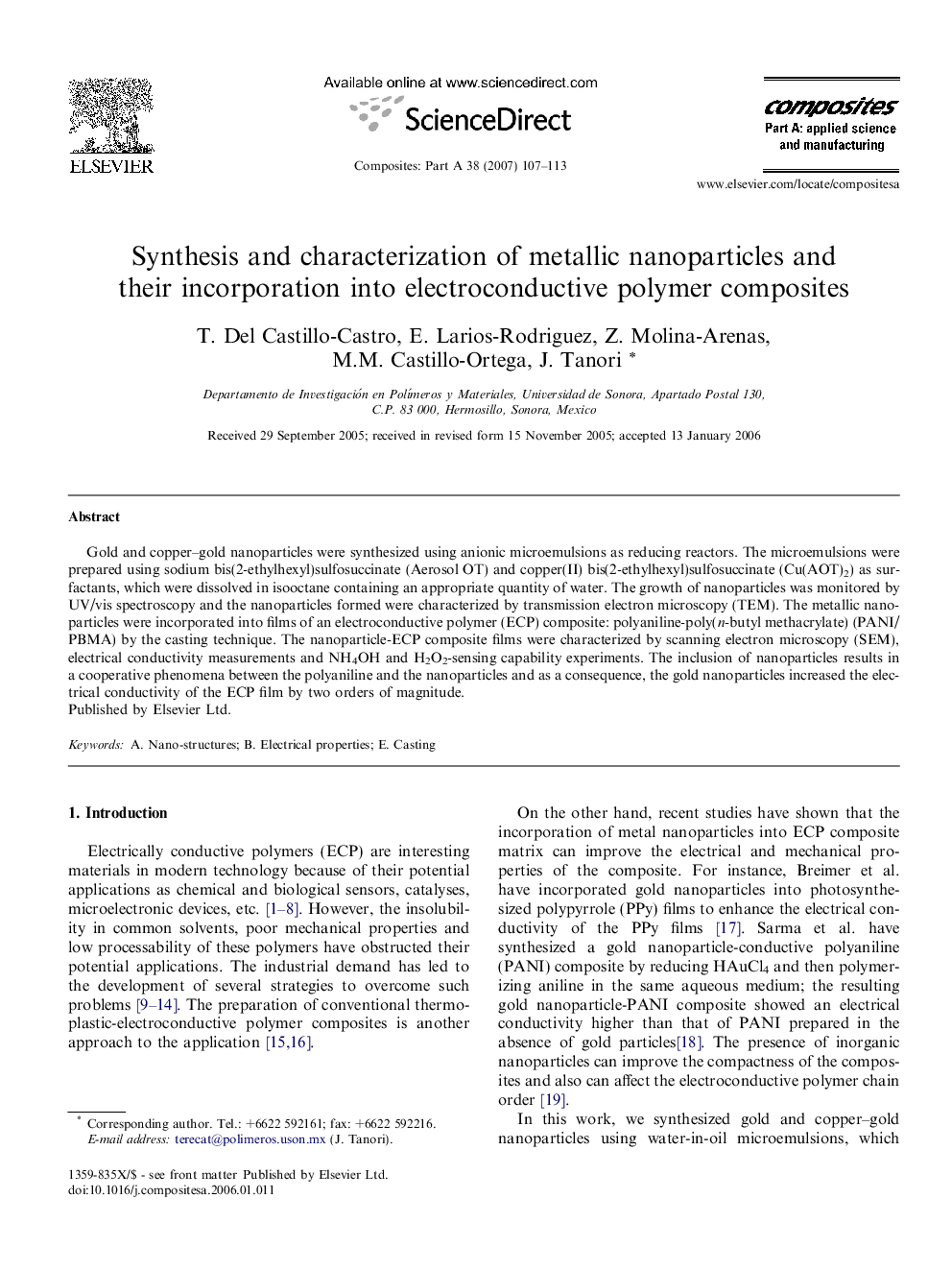| Article ID | Journal | Published Year | Pages | File Type |
|---|---|---|---|---|
| 1467718 | Composites Part A: Applied Science and Manufacturing | 2007 | 7 Pages |
Gold and copper–gold nanoparticles were synthesized using anionic microemulsions as reducing reactors. The microemulsions were prepared using sodium bis(2-ethylhexyl)sulfosuccinate (Aerosol OT) and copper(II) bis(2-ethylhexyl)sulfosuccinate (Cu(AOT)2) as surfactants, which were dissolved in isooctane containing an appropriate quantity of water. The growth of nanoparticles was monitored by UV/vis spectroscopy and the nanoparticles formed were characterized by transmission electron microscopy (TEM). The metallic nanoparticles were incorporated into films of an electroconductive polymer (ECP) composite: polyaniline-poly(n-butyl methacrylate) (PANI/PBMA) by the casting technique. The nanoparticle-ECP composite films were characterized by scanning electron microscopy (SEM), electrical conductivity measurements and NH4OH and H2O2-sensing capability experiments. The inclusion of nanoparticles results in a cooperative phenomena between the polyaniline and the nanoparticles and as a consequence, the gold nanoparticles increased the electrical conductivity of the ECP film by two orders of magnitude.
